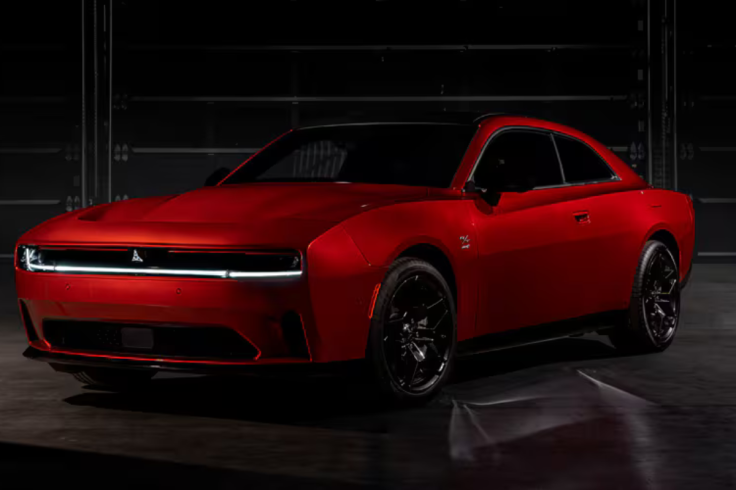Why Has Dodge Torched Its Epic Charger Daytona EV Before Launch?
Dodge has cancelled its Charger Daytona Banshee EV before launch, citing poor sales, tariff pressures and a renewed push for V8 power.

Dodge's bold electric muscle car revolution hit a screeching halt on 1 October 2025, as reports confirmed the cancellation of the Charger Daytona SRT Banshee EV, a 1000-horsepower beast originally slated for a 2025 debut.
Envisioned as the EV successor to the Hellcat, this 800-volt powerhouse fell victim to sluggish sales, tariff pressures, and a roaring backlash from V8 loyalists craving combustion thunder.
With only 1,947 Charger Daytona EVs sold in Q1 2025, Dodge made a sharp U-turn to petrol power, leaving enthusiasts reeling over the torched dreams of an electrified Daytona dominance.
Sluggish Sales and Dealer Lot Nightmares: The EV Muscle Misfire
Dodge launched the Charger Daytona EV with great fanfare in early 2025, boasting 670 horsepower in the Scat Pack trim and a blistering 0-60 mph sprint in 3.3 seconds. Priced from £40,140 ($59,995) for the R/T and £47,000 ($73,190) for the Scat Pack, it promised instant torque and all-wheel-drive grip for muscle car purists.
Yet reality bit hard: only 1,947 units moved in the first quarter, dwarfed by lingering demand for the now-discontinued V8-powered Chargers. Dealers grappled with 3,500 unsold R/T models, slashing prices to £26,000 ($40,000) amid incentives and tax credits.
On 1 October 2025, Car and Driver posted on X: 'Dodge Reportedly Cancelled the Most Powerful Charger Daytona EV as Combustion Pendulum Swings Back'.
Dodge Reportedly Cancelled the Most Powerful Charger Daytona EV as Combustion Pendulum Swings Back https://t.co/ipiWX8BuO9
— Car and Driver (@CARandDRIVER) October 1, 2025
Software glitches and recalls over inadequate pedestrian warning systems compounded woes, eroding consumer confidence. Dodge's £250 million ($383.5 million) EV push yielded scant returns, forcing a rethink on electrified ambitions. Fans waited, engines idling, as the brand scrambled to reignite passion.
Tariff Turbulence and Strategic Shifts
US tariffs under the Trump administration introduced in January 2025 placed heavy pressure on the Canadian-built Daytona EV. Batteries sourced from South Korea faced 25% duties, inflating prices by up to £7,700 ($11,800) per unit and squeezing margins.
Dodge CEO Matt McAlear confirmed on 16 May 2025, 'Production of the Dodge Charger Daytona R/T is postponed for the 2026 model year as we continue to assess the effects of U.S. tariff policies.' This policy punch, layered atop a cooling EV market, accelerated the Banshee's demise before its 800-volt, tri-motor setup could even rev up.
Stellantis, Dodge's parent company, reallocated £1.03 billion ($1.58 billion) from EV development to internal combustion engine revivals, echoing broader industry retreats. The Ram 1500 REV truck was delayed to 2027, while the Jeep Gladiator 4xe was scrapped—symptoms of Dodge's wider woes. Analyst Sam Fiorani noted on 17 May 2025, 'Everybody is leaning on tariffs for every change in production or sales, whether real or not.'
Dodge's STLA Large platform, designed for multiple powertrains, now prioritises Hurricane twin-turbo I6 models launching late 2025. This shift saved £310 million ($475.6 million) in supplier costs for the Banshee project alone.
Consumers felt the ripple effect: four-door EV variants delayed to mid-2026, blending utility with electric allure but tempered by fiscal prudence. As tariffs reshaped supply chains, Dodge organised a comeback rooted in reliability over radical reinvention.
V8 Roars Back: Combustion Crushes Electric Hype
Dodge's Hemi V8 resurrection, announced on 30 September 2025, signalled the death knell for the Banshee, as suppliers halted work on 800-volt components. The 5.7-litre Hemi returns to the 2026 Ram 1500 and Durango, with Charger integration teased by McAlear: 'Don't be surprised if it would fit.'
This £620 million ($951 million) pivot aligns with surging demand for 420-540 horsepower Sixpack variants, outpacing EV uptake. Muscle fans, alienated by the Daytona's synthetic 'Fratzonic' exhaust, flocked to petrol previews, boosting pre-orders by 40%.
Enthusiast forums buzzed with relief, with one X user lamenting on 3 September 2025: '4,299 units! That's all Dodge sold of the Charger Daytona in 2025... Rumors say the whole lineup could be axed after 2027'.
4,299 units! That’s all Dodge sold of the Charger Daytona in 2025 😳 The EV muscle car is already struggling — and the entry-level R/T is reportedly gone for 2026. Rumors say the whole lineup could be axed after 2027. Should Dodge bring the HEMI back, or keep chasing electric?… pic.twitter.com/VfxUylPeVF
— Vicrez.com (@vicrezcom) September 3, 2025
As a result of changes in consumer demand, Dodge's Dare Forward 2030 plan was revamped. Originally EV-centric, the company now plans to balance hybrid offerings, aiming to cut carbon emissions by 50% with flexible powertrains that combine performance and sustainability.
© Copyright IBTimes 2025. All rights reserved.





















